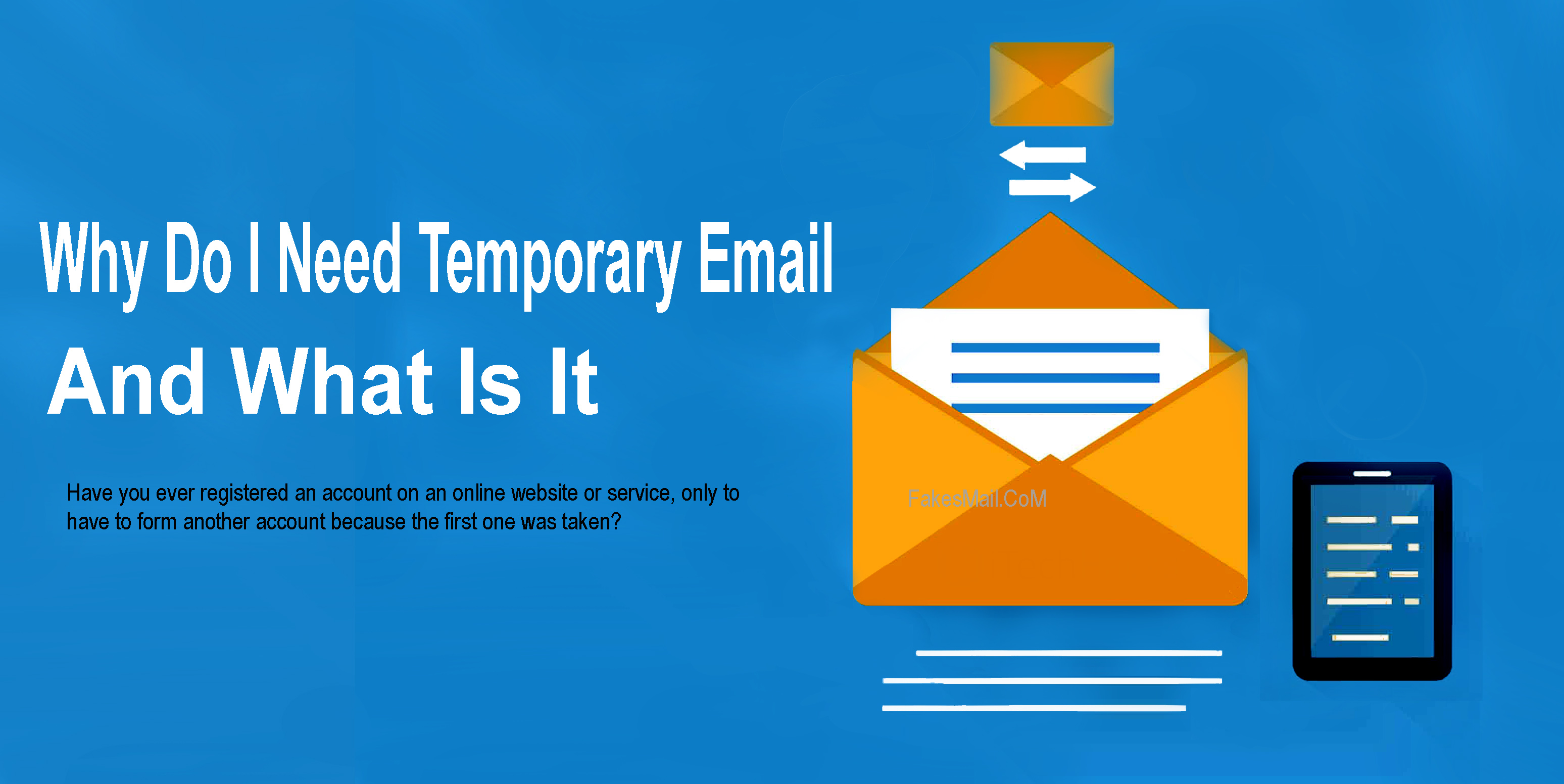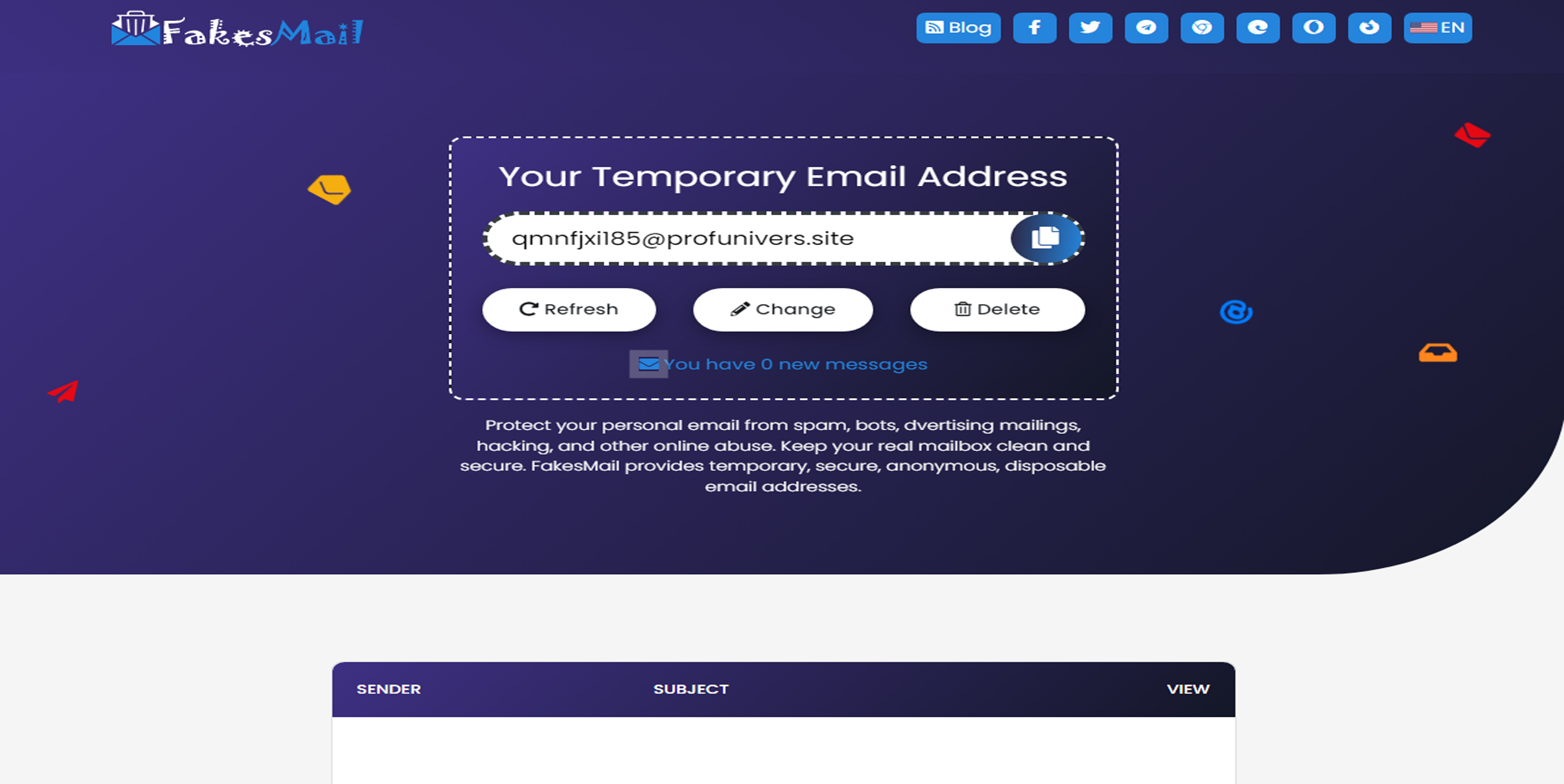In today's digital age, communication has become more convenient and faster than ever before, thanks to email services. Traditional email has been a staple for personal and professional communication, enabling people to stay connected across the globe. However, with the rise of privacy concerns and the increasing prevalence of online spam, temporary email, or "FakesMail" has emerged as an alternative solution for certain situations. In this article, we will explore the key differences between temp mail and regular email, along with their distinct use cases.
What Is Temp Mail/ FakesMail?
FakesMail, also known as temporary email or disposable email, is a service that provides users with short-term email addresses. Unlike regular email addresses, which are linked to an individual or organization and exist indefinitely, FakesMail addresses are temporary and typically last for a short duration, ranging from a few minutes to a few days. The primary purpose of FakesMail is to offer users a high level of anonymity and privacy, making it a convenient solution for situations where users need to access online services, sign up for websites, or download content without revealing their primary email address. By using FakesMail, users can avoid potential spam and unwanted messages in their regular inbox, keeping their primary email protected from any unnecessary clutter.
What Is Regular Mail?
Regular mail, also known as Gmail, Yahoo or Hotmail, refers to the traditional postal service for sending physical letters, packages, and other forms of mail. Unlike electronic communication methods such as email, regular mail involves the physical transportation of mail from one location to another through a postal system.
In the past, regular mail was the primary means of long-distance communication and was delivered by postal workers who manually sorted and delivered letters and parcels to recipients' mailboxes or addresses. While electronic communication has largely replaced regular mail for quick and instant messages, regular mail is still used for various purposes, such as sending official documents, packages, greeting cards, and other physical items that require delivery over longer distances.
Regular Email: A Trusted Means of Communication
Regular email is a permanent electronic messaging system used for exchanging messages between individuals and organizations. It is an essential tool for personal communication, professional correspondence, and business operations. Regular email addresses are typically created through various email service providers like Gmail, Outlook, Yahoo Mail, and more. Users usually associate their real names with these accounts, providing a sense of identity and trustworthiness.
Advantages of Regular Email:
- a. Trusted Identity: Regular email addresses are linked to real individuals or organizations, enhancing trust in online communication.
- b. Professionalism: Regular email is widely accepted in formal settings, making it ideal for job applications, client interactions, and business operations.
- c. Long-term Usage: These email addresses can be used for an extended period, providing a consistent means of communication.
FakesMail: The Disposable Email Solution
FakesMail, also known as temporary email or disposable email, is a service that provides users with temporary email addresses. Temporary email addresses are valid for a limited time, usually from a few minutes to a few days depending on the provider. FakesMail is designed to offer a high level of anonymity, making it useful for situations where users need to protect their primary email from potential spam or unwanted messages.
Advantages of FakesMail:
- a. Anonymity: FakesMail allows users to maintain anonymity and protect their real identity from potential misuse or spam.
- b. Avoiding Spam: By using FakesMail for online registrations, users can avoid receiving unwanted promotional emails in their primary inbox.
- c. Short-term Needs: It is perfect for situations where a user needs an email address for a limited duration, such as signing up for a one-time service or accessing gated content.
Use Cases for Regular Email and FakesMail
Regular Email Use Cases:
- Professional Communication: Regular email is ideal for official correspondence, job applications, and client interactions, as it provides credibility and trust.
- Personal Communication: For staying in touch with family and friends, regular email remains the preferred option, ensuring long-term connectivity.
- Subscription Services: When users require consistent updates and newsletters from services they genuinely value, regular email addresses are recommended.
FakesMail Use Cases:
- Online Registrations: FakesMail can be used to sign up for websites or services that require an email address but might lead to spam or unsolicited messages.
- Avoiding Unwanted Communication: When users need to access a one-time resource or download content without sharing their primary email, FakesMail is a valuable solution.
- Protecting Privacy: For online activities that may seem potentially risky or less reputable, using FakesMail can prevent any compromise of personal information.
Conclusion
In summary, both regular email and FakesMail serve different purposes and cater to specific needs in the digital realm. Regular email remains the foundation of formal and consistent communication, while FakesMail offers a valuable temporary shield against spam and unwanted messages. Understanding the differences between these two options empowers users to make informed decisions when engaging in various online activities, ensuring both security and convenience in the digital world.




